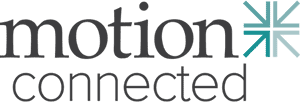If there’s one message ringing loud and clear from the newly released 2025 Employee Wellbeing & Engagement Trend Report by Motion Connected and the Wellness Council of Wisconsin (WCWI), it’s this:
“Workplace wellbeing is no longer an extra, it’s the engine driving modern work culture.”
While companies continue to wrestle with big questions—economic shifts, hybrid work, evolving employee expectations—the data shows they’re doubling down on one essential truth: healthier, happier employees build healthier, more successful businesses.
Let’s explore the story the numbers tell.
Mental Health Takes Center Stage
Once upon a time, corporate wellness meant once-a-year biometric screenings and maybe a flu shot clinic. Today? It’s taking a more holistic approach, centering on mental health.
Our report found the number one reason that 83% of companies are offering a wellness program is to enhance mental and emotional wellbeing.
Initiatives like Employee Assistance Programs (EAPs), mental health days, flexible leave policies, and stress management education are all becoming the new norm. Some companies are even training staff in Mental Health First Aid—a sign that employers want to equip their people to help one another, not just refer them out for professional help.
Incentives are Evolving—But Budgets are Under Pressure
Although cash and gift cards remain the go-to incentives, the report hints at a creative shift. Organizations are experimenting with more creative and unique incentives like cooling towels, free meals, extra casual dress days, tech gadgets and more to keep engagement fresh and personalized (while staying in budget).
Yet there’s a slight tension: companies are spending less on average—$610 per employee annually in 2025, down from $737 in 2024. Despite this dip, companies that invest $500 or more per employee see stronger participation in their programs. So, while budgets may be tighter, smart investments still pay dividends in engagement.
Physical Wellness is Still the Crowd Favorite
Nearly 90% of employers plan to maintain or increase investment in activity challenges. Why? Because these programs are fun, social, and deliver real health benefits. Whether it’s virtual step competitions or group workouts, organizations see physical activity as a powerful connector across hybrid or remote workforces.
Financial Wellbeing Moves Up the Priority List
The report reveals that 84% of companies are maintaining or increasing investment in financial wellness offerings like Health Savings Accounts (HSAs), budgeting education, and retirement planning. With economic uncertainty and the stress of rising living costs, employees crave guidance and security around their finances more than ever.
This pivot reflects a broader understanding: financial stress bleeds into mental and physical health—and ultimately, work performance.
Engagement Still Has Room to Grow
Despite these efforts, participation in wellness programs averages only 43%. Less than half of companies say they’re truly satisfied with engagement levels.
Interestingly, in-office workplaces report the highest participation rates (48%), while hybrid and remote environments see lower engagement. It’s a signal that while virtual wellbeing programs are booming, companies still haven’t fully cracked the code on how to inspire widespread involvement from afar.
The Big Picture: A People-First Future
Ultimately, the 2025 Trend Report paints a hopeful picture.
Companies are moving beyond transactional wellness perks and building holistic, people-first programs. They’re getting creative with incentives, doubling down on mental health, and tackling financial stress.
For HR professionals, wellness champions, and company leaders, this report is more than a collection of stats. It’s a roadmap pointing toward a future where wellbeing isn’t just part of the business—it is the business.
Curious to see how your organization stacks up, or looking for fresh ideas to elevate your wellness game? The full 2025 WCWI Employee Wellbeing & Engagement Trend Report offers a variety of insights waiting to be explored.




